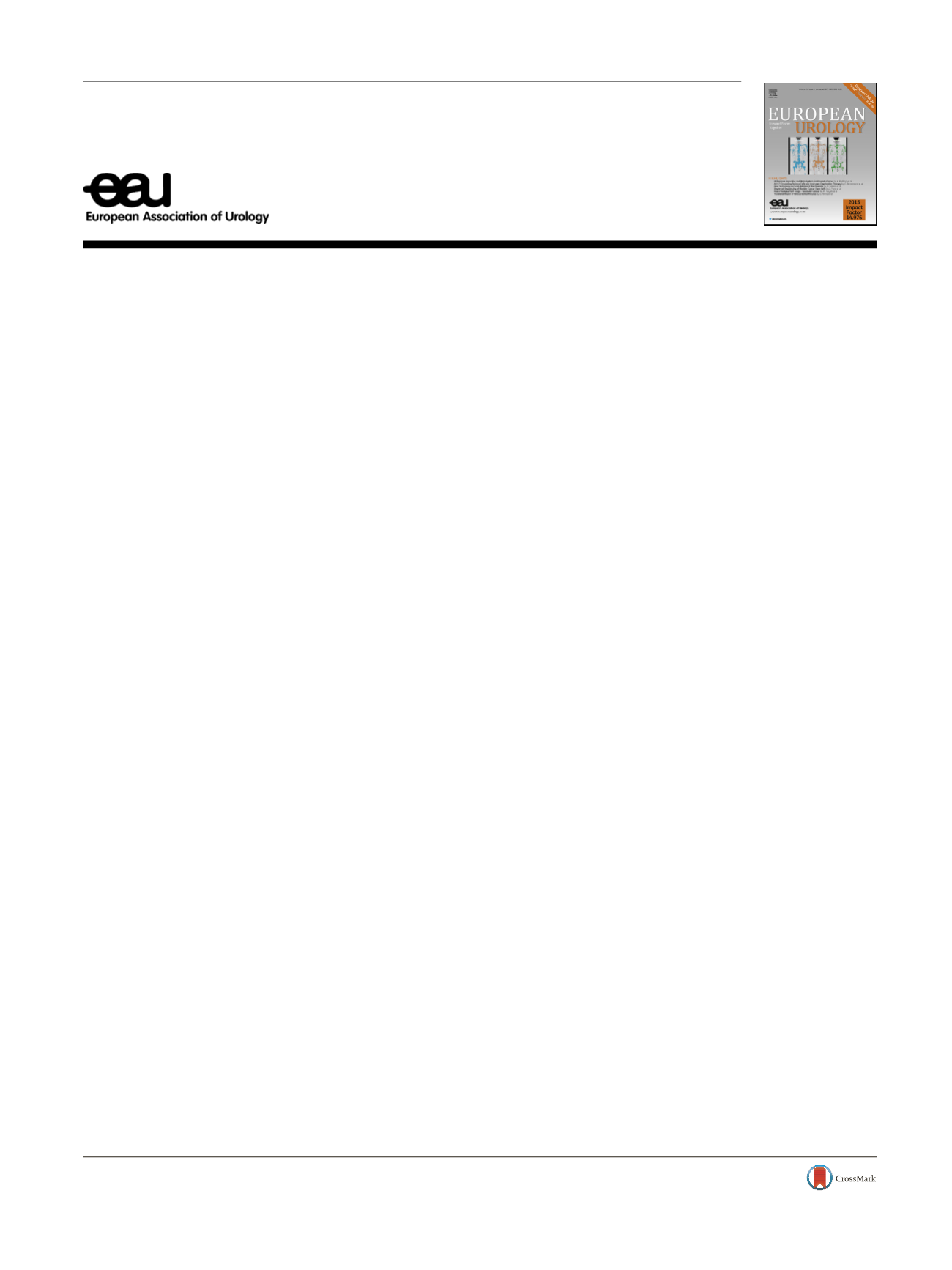

Letter to the Editor
Re: Zhihua Lu, Guiting Lin, Amanda Reed-Maldonado,
Chunxi Wang, Yung-Chin Lee, Tom F. Lue. Low-intensity
Extracorporeal Shock Wave Treatment Improves
Erectile Function: A Systematic Review and
Meta-analysis. Eur Urol 2017;71:223–33
Low-intensity Extracorporeal Shock Wave Treatment of
Erectile Dysfunction: Does the Shadow Exceed the Light?
We read with great interest the article by Lu et al
[1] ,as we
have previous experience and a long history with low-
intensity extracorporeal shock wave therapy (LI-ESWT) for
men with erectile dysfunction (ED). In contrast to the
findings reported by these authors, we have had little
success with LI-ESWT in our clinics and have mostly
discontinued its use. We were surprised by their findings
and question their conclusions and title, despite their sound
methodology and the numerous limitations carefully out-
lined in the discussion. While systematic reviews are the
cornerstone of evidence-based medicine, they only reflect
the data for a field and cannot overcome numerous limited-
quality studies. There are numerous examples of discre-
pancies between systematic reviews and the eventual large
randomized controlled (RCTs) trials
[2].
We are concerned that the authors present their findings
in a too positive light given the limitations of their data set.
For example, LI-ESWT for EDwas published for the first time
in 2010, but Lu et al include reports from 2005. These earlier
studies used the more classical high-intensity ESWL (as
used for the treatment of stones) for pelvic pain and
Peyronies disease with or without ED. Second, their
discussion details key weaknesses in the quality of the
data analyzed. Five of the seven studies included were of
nonrandomized cohort design. Furthermore, the RCTs
included had potential biases that could overcome the
benefits of their design (eg, they were not blinded). In total,
approximately 60% of the studies had a risk of bias in the
randomization. Only 17% of the studies analyzed had
adequate blinding for patients and doctors. Third, LI-ESWT
showed only some improvement in the group with mild ED
defined according to the International Index of Erectile
Function (IIEF), but not for moderate and severe ED. To our
eyes, this suggests a placebo response. Fourth, the longest
follow-up evaluated was 3 mo, so the reliability and
durability of this treatment were not demonstrated.
The main limiting factor of this work is the very
subjective IIEF questionnaire used to determine ESWL
outcomes. The IIEF questionnaire score changes dramati-
cally for modest responses. For example, using this
questionnaire, if responses change from ‘‘a few times’’ to
‘‘sometimes’’ then the total score can be improved by up to
5 points, which is approximately the difference found
within this review. How can this be clinically relevant? The
minimal clinically important difference domain of the IIEF
better assesses the true clinical efficacy of LI-ESWT according
to the model of Rosen et al
[3]and is underlined by the
authors in their discussion as amore accurate andmeaningful
tool for evaluating the effect of LI-ESWT in patients with ED.
However this was not the case in the studies analyzed. In a
few studies, the erection hardness score did not show
significant improvement at 3 mo, only at 1 mo.
The only two relevant practical questions for considering
LI-ESWT in ED are:
(1) Did patients responding to a phosphodiesterase type
5 inhibitor (PDE5-I) need to continue its use after LI-
ESWT?
(2) If patients were not responding to a PDE5-I did they
respond after LI-ESWT?
These important practical aspects are not considered in
most studies analyzed in this review. It is our opinion that
[2_TD$DIFF]
it
[4_TD$DIFF]
is inappropriate to conclude that LI-ESWT should become
the first-line treatment for ED until the real clinical effects
of LI-ESWT have been carefully evaluated in high-quality
prospective studies.
Conflicts of interest:
The authors have nothing to disclose.
References
[1]
Lu Z, Lin G, Reed-Maldonado A, Wang C, Lee Y-C, Lue TF. Low- intensity extracorporeal shock wave treatment improves erectile function: a systematic review and meta-analysis. Eur Urol 2017;71:223–33.
E U R O P E A N U R O L O G Y 7 1 ( 2 0 1 7 ) e 1 3 7 – e 1 3 8ava ilable at
www.sciencedirect.comjournal homepage:
www.eu ropeanurology.comDOI of original article:
http://dx.doi.org/10.1016/j.eururo.2016.05.050.
http://dx.doi.org/10.1016/j.eururo.2016.09.0180302-2838/
#
2016 European Association of Urology. Published by Elsevier B.V. All rights reserved.
















